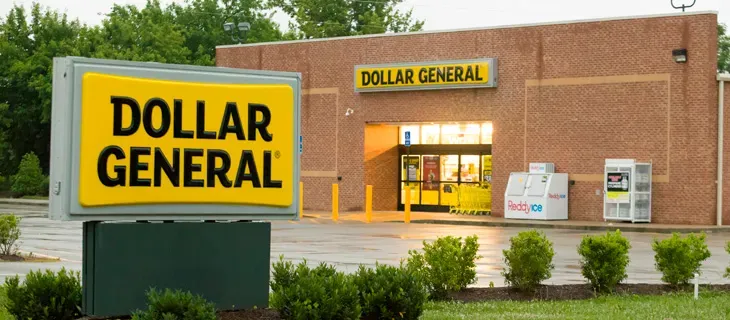By any reckoning, Tesco is a world-class retailer. Its footprint covers half the globe, stretching from the United Kingdom across Eastern Europe and into Asia with emporiums that vie for market leadership in nearly every country where the retailer has a presence.
By any reckoning, Tesco is a world-class retailer. Its footprint covers half the globe, stretching from the United Kingdom across Eastern Europe and into Asia with emporiums that vie for market leadership in nearly every country where the retailer has a presence.
In the United Kingdom, Tesco’s home base, the retailer set the standards for merchandising excitement, service and value, and brought the hypermarket concept to new levels of excellence with its Extra format.
Its store formats saturate its various U.K. communities, with a range of sizes and formats that address every consumer, every necessity, every whim, every shopping occasion.
Tesco is a leader in online shopping, has developed one of the most effective shopper loyalty programs, and led the way into such tangential consumer services as banking and travel.
Why, then, did Fresh & Easy fail? Why was one of Tesco’s most dramatic and expensive retailing experiments, one that cost the company billions of dollars, uncounted human failures and years of failed initiatives, such an abysmal disaster?
People most knowledgeable about Fresh & Easy, Tesco’s ill-fated enterprise that sought to open convenience stores across the far western United States, point to several basic mistakes that a retailer of Tesco’s experience and excellence should neither make nor fail to correct. Here, in no particular order, is a rundown:
• The retailer misread the American consumer — or, at the least, the western retailing environment, one that is different, and far more diverse and complicated, than the rest of the country. This corner of America is particularly accustomed to shopping at conveniently located, easily accessed (by car) supermarkets. By opening 15,000-square-foot convenience stores in out-of-the-way locations the company was asking the customer more than she was willing to give.
• The concept was hugely over-researched. Sources say that Tesco spent fully years convening panels, organizing focus groups and building mock stores in an attempt to determine what customers wanted in a shopping experience. At the end of that period the company offered them a merchandise assortment lacking in many basics (and indeed misreading what is basic for an American consumer), overloaded with private label products — a Tesco staple in much of the world — and missing such important departments as pharmacy and a dominant “fresh” offering, while providing too limited an assortment of such nonfood basics as health and beauty aids. Atop that, the retailer challenged its shoppers by offering them only one checkout option: self-checkout. Too many consumers dismissed that option as too challenging.
• The retailer counted too much on U.K. personnel to manage Fresh & Easy, while largely ignoring the pool of U.S. retail talent at its front door — and refusing to listen to those U.S. executives the company did hire. In most corners of the world Tesco acutely understands the importance of using local talent to manage its business and adjust its merchandise assortment. For some reason that lesson was ignored in the United States. Atop that mistake, the retailer chose as its Fresh & Easy chief a U.K. retailing executive who instantly fell in love with the California weather — and just as quickly settled in Santa Monica. There he remained — and still remains — as Fresh & Easy, despite many futile attempts to adjust the mix, brighten up the stores, locate stores in more promising and potentially more lucrative neighborhoods, and add or more-effectively deploy services, slowly sank into oblivion.
The cities and states Tesco chose for its Fresh & Easy experiment were wrong for a Fresh & Easy model. To take California as an example, it would have been most retailers’ last choice to open a convenience store chain amid so many appealing supermarket options. And, in choosing California, why choose locations that are so far off the beaten path? Taking this thinking a step further, in choosing to open stores in Hispanic communities, why not offer the customers a merchandise assortment more attuned to their tastes? And why not advertise and promote that assortment in their native language: Spanish?
What’s most confounding in all this is the question that’s most difficult to answer: Why? Why did Tesco do so many things wrong — and so few things right? Why was the company so slow to correct its early mistakes?
Why was leadership so lacking, so misguided — or so far away?
There are no easy answers. Terry Leahy, the brilliant retailing executive who built and guided Tesco to unprecedented success and international acclaim before retiring two years ago, takes the blame for the Fresh & Easy failure, calling the U.S. experiment a calculated risk. But that explanation is hardly sufficient to explain this massive miscalculation, one that has set the entire organization back on its heels.
As difficult to explain as the initial failure is why the retailer, having finally realized its mistakes, took such feeble measures to correct them. Nowhere is this more evident than in the fact that the merchandise assortment, misdirected and inadequately suited to the American consumer, was never truly revised, only adjusted. The basic store, and mix, remained largely untouched after five years. True, the stores were given fresh paint, brighter colors and a warmer atmosphere. True, too, that such basics (for Americans) as hot coffee and fresh bakery items were added. But the stores remained Fresh & Easy. In the end, they were neither.
In the end, as well, Tesco CEO Philip Clarke had this to say: "We gave the business the best shot."
Even that summation, given the fact that Fresh & Easy, a chain that ultimately produced 200 units in three western states, could only muster $1.5 billion in sales in five years, was woefully inadequate to explain or excuse the retailing disaster in the American West.





